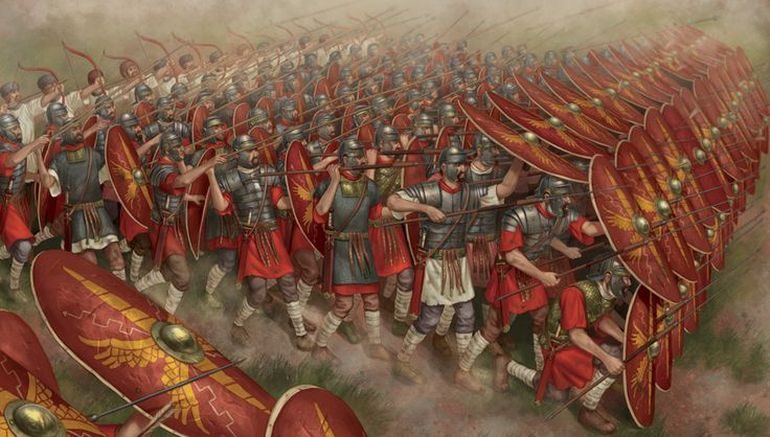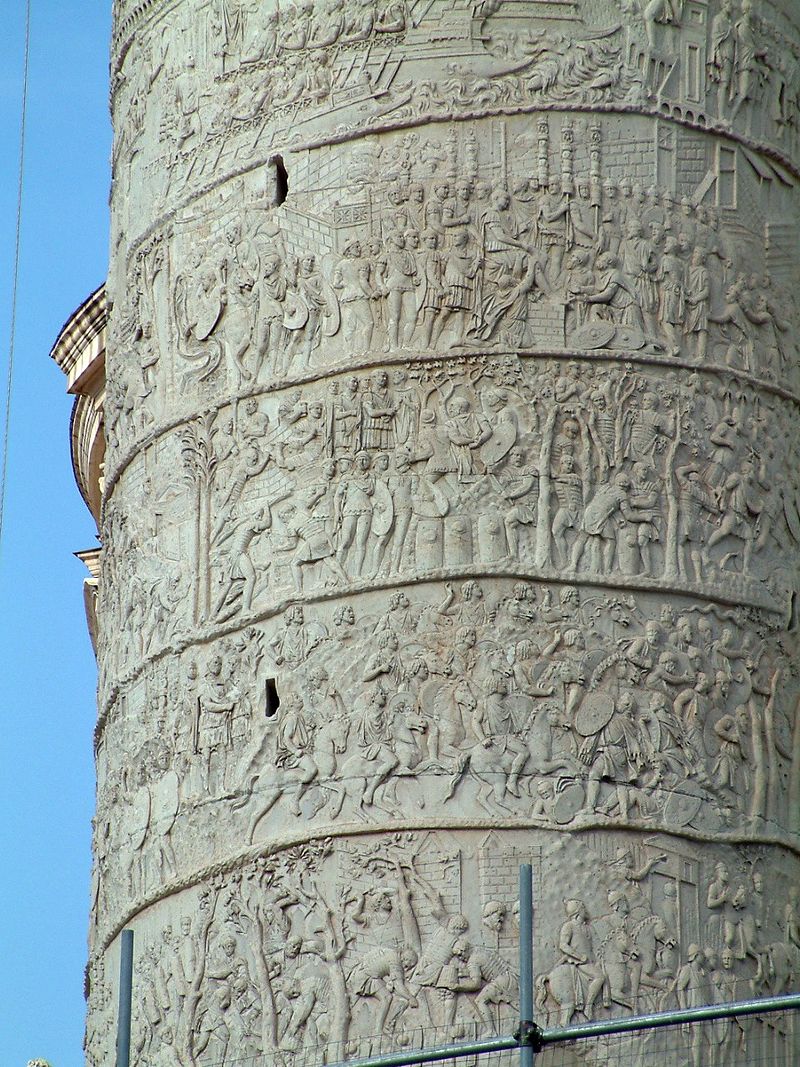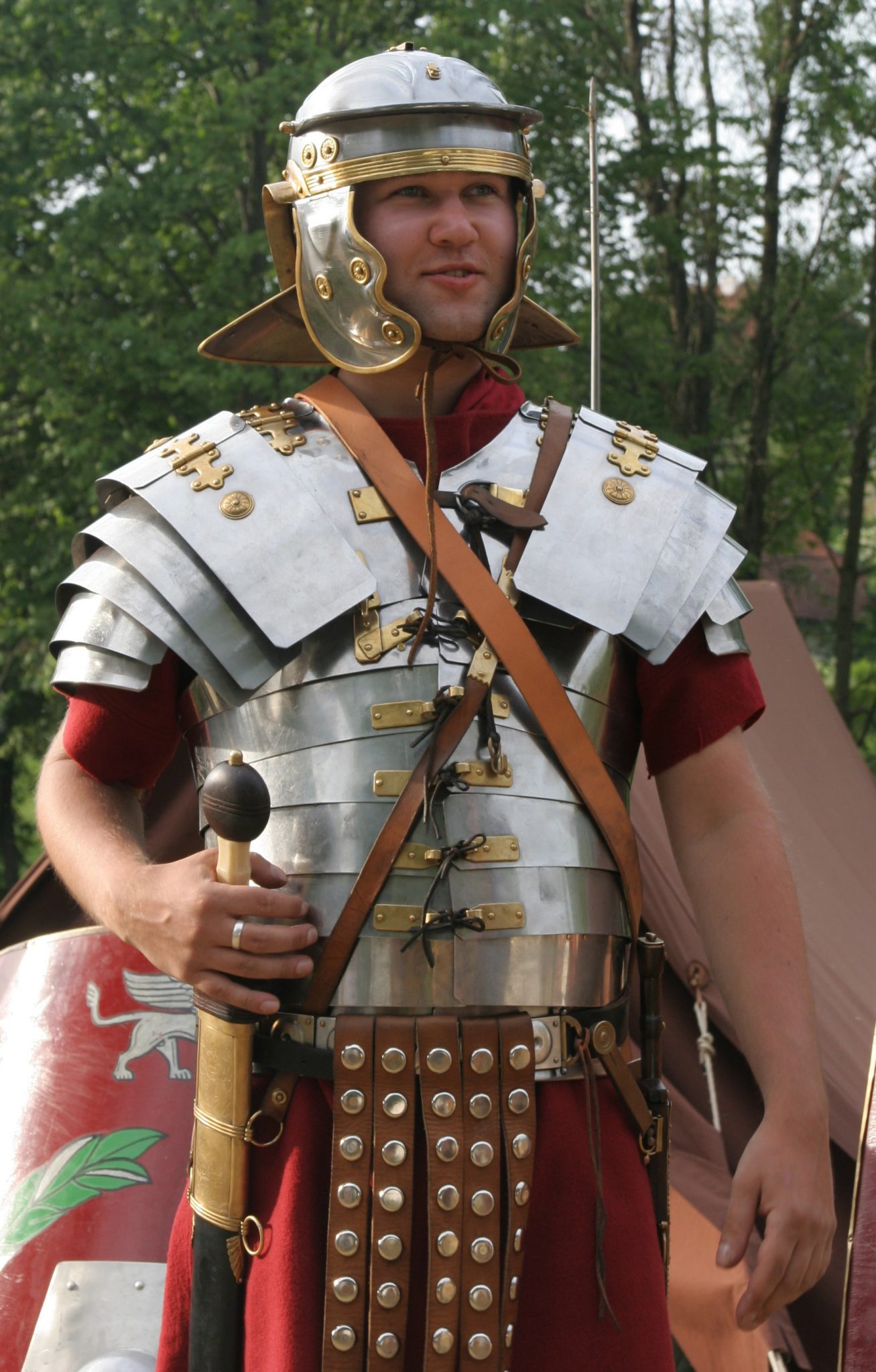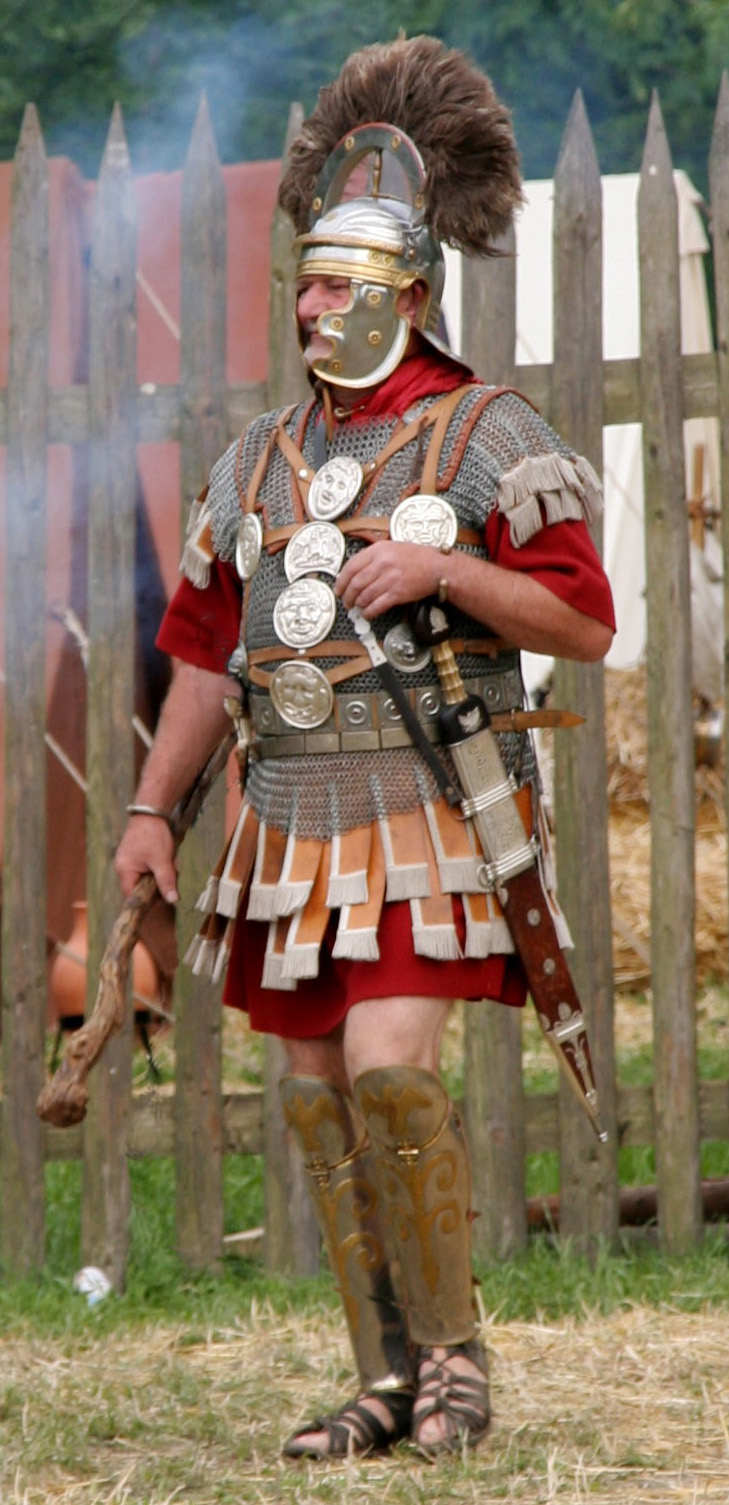Roman Soldiers of the 1st Century – Armour and Tactics
Photo 1 – A typical battle formation of the 1st century B.C.[1]
Introduction
When attempting to discover the background to Paul’s analogy of “The Armour of God” in Ephesians chapter 6, we encounter a number of challenges. In the first place, written records describing what soldiers wore are relatively rare. Historians often have to rely upon archaeological excavations, statues and inscriptions on Roman civic sculptures such as the one shown here[2].
Photo 2 – Section of Trajan’s Column, Rome, showing the spiral friezes that represent the best surviving evidence of the equipment of imperial Roman soldiers
The second challenge we face concerns the fact that the precise details of armour worn changed over time and from one province to another. Paul wrote the letter to the Ephesians whilst imprisoned in Rome, around 62 A.D. Although he was continuously guarded by soldiers we have no idea if his armour analogy was based solely upon their equipment, entirely drawn from Old Testament imagery or (most likely) consisted of a mixture of both.
For example, consider the following passage from Isaiah:
Isa 59:17 NIV He put on righteousness as his breastplate, and the helmet of salvation on his head; he put on the garments of vengeance and wrapped himself in zeal as in a cloak.
Here, Isaiah describes the armour that God puts on when he can find no justice, righteousness or truth amongst his covenant people. Clearly, Paul has based at least some of his “Armour of God” imagery on the Old Testament (OT).
The armour worn by a Legionary of the 1st century
Most scholars believe that Paul would have been most familiar with the kind of armour shown in the following images.
|
Photo 3 – Historical re-enactor wearing replica equipment of a Roman legionary about AD 75, standing in front of his contubernia’s tent. Note the one-piece, short-sleeved tunic, Imperial Gallic G helmet, Corbridge A body armour, Pompeii-Type Gladius, pugio (dagger) on left hip and scutum or rectangular shield[3] |
Photo 4 – Historical re-enactor wearing replica equipment of a late 1st-century centurion.[4] |
However, some caution is required when transferring these shiny, re-enactment examples onto the Biblical text. Modern materials may not properly represent the condition of clothing and metalwork of the 1st century Roman army. Although polished, metalwork was more probably bronze or iron, though probably quite as shiny.
“Very shiny metalware was their [Legionaries] pride and joy, giving them status in front of their peers and even providing a sort of protection in battle: As you stood eye to eye with your enemy, a soldier with very expensive looking equipment would seem to have a lot of experience (to be able to pay for all his expensive kit – they owned it themselves). So the enemy would perhaps try to avoid this soldier and go for his neighbour.”[5]
I strongly recommend the following video as an introduction to the armour of a Roman Legionary:
https://www.youtube.com/watch?v=darFb6k_QgI
Gordon Smyrell (April 2017)
To view the full article click here.
If we have not attributed or mis-attributed any image, artwork or photograph, we apologize in advance. Please let us know via the ‘Contact Us’ link on our home page, provided both above the top bar and at the bottom bar of the page.
[1] Taken from https://bossieraim.wikispaces.com/Roman+Empire which operates under a Creative Commons licence {Attribution-ShareAlike 3.0 Unported (CC BY-SA 3.0) https://creativecommons.org/licenses/by-sa/3.0/} , no changes made
[2] Photo of Trajan’s column taken by Radomił Binek (https://commons.wikimedia.org/wiki/User:Radomil). It was found at https://en.wikipedia.org/wiki/Imperial_Roman_army (accessed on 22 Mar 2017) which is licensed under the Creative Commons Attribution-Share Alike 3.0 Unported license; no changes were made to the photo.
[3] Photo 3 is a self-published work by Medium69, CC BY-SA 3.0, https://commons.wikimedia.org/w/index.php?curid=37082487. Found at https://en.wikipedia.org/wiki/Imperial_Roman_army, accessed on 22 Mar 2017
[4] Photo 4 is a self-published work by Medium69, CC BY-SA 3.0, https://commons.wikimedia.org/w/index.php?curid=37038101. Found at https://en.wikipedia.org/wiki/Imperial_Roman_army, accessed on 22 Mar 2017
[5] From a private email exchange with Stephanie Hoss, University of Cologne, Institute of Archaeology dated 03 Mar 2017




